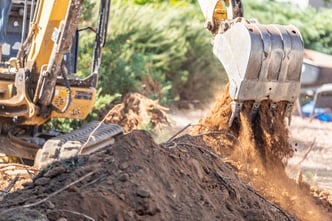Trenching and excavation come with inherent dangers. While regulators and industry organizations have worked hard in recent years to reduce associated risks and damages, the results have been varied.

The Common Ground Alliance’s latest DIRT Annual Report, which collects and analyzes reports of damages to buried infrastructure in the United States and Canada, has revealed some concerning trends.
The Common Ground Alliance (CGA) is an industry group devoted to preventing damage to underground infrastructure and protecting the lives of workers and community members by promoting effective damage prevention practices. It’s made up of members of a diverse group of stakeholders, from excavators to regulators to wastewater operators and emergency services.
CGA found that estimated U.S. damages are trending upward for a fifth consecutive year, increasing 4.5% year-over-year to 532,000. At the same time, incoming locate requests have increased even faster, meaning the use of the 811/one-call center system is on the rise. This bodes well for the program’s efficacy and public awareness, but it also raises concerns about increased strain on a system that is already showing cracks.
Furthermore, the causes of these damages were varied, meaning that mitigation efforts will need to be multifaceted. While failure to submit a locate request accounted for the largest number of incidents (29.10%), it was nearly matched by both locating practices (which caused 28% of damages) and excavation practices (29%). The chart below shows a more detailed breakdown.
The cost of these damages is also rising accordingly. In the U.S. alone, damages to buried utilities cost approximately $30 billion in 2019. This total includes both direct costs (repair to the damaged utility and restoration of service) as well as indirect costs for property damage, medical expenses, disruptions to nearby business and traffic, litigation costs, and more.
How can CGA and its constituents halt the increase of damages and limit the associated costs? To make a noticeable dent in the rate of damages, improvements will need to be made across every step of the excavation process and involve a wide range of stakeholders. CGA uses a consensus-based organizational structure to produce the CGA Best Practices manual, which names more than 160 practices that cover all phases of the safe digging process. But as the DIRT report warns, “The biggest categories of damage root causes correspond to Best Practices that lack specificity.” It continues, “With low-hanging fruit harvested, the remaining issues facing the industry are more challenging ones.”
This report proposes a number of best practices that the CGA Best Practices committee might start with in its efforts to clarify and strengthen existing practices. But a concerted effort across all stakeholders will be needed to improve long-term outcomes. Click here to read the whole report from CGA.